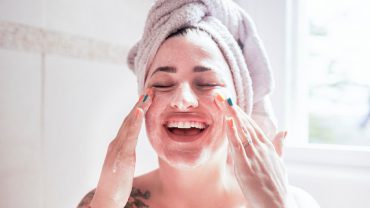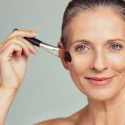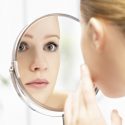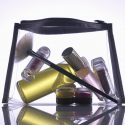Mature skin care: 40+ skin in a closeup
No matter the type, skin is categorized as mature once you turn 40. Around this time, the skin care practices and habits that you’ve developed require some significant modifications as the basic needs of skin change. How to take good care of mature skin? What products are expected to satisfy all needs of mature skin?
What is mature skin?
Somewhere around 40 years of age skin becomes less and less resilient. The shortages of collagen and elastin, which are known for being the proteins of youth, are responsible for this state of things. Due to the deficiencies of the basic proteins in skin, our face starts developing new fine lines whereas the existing wrinkles get more pronounced and deep. Caused by the successive reduction of estrogens in blood, skin also loses ceramides that so far have been maintaining the adequate hydration levels. All of this combined results in mature skin becoming dull and matte, and looking chronically tired. Fortunately, there are some ways that help us delay the very adverse processes that occur in the body. Thought-out care, which is provided by application of mature skin products, appears to be the most effective method of preserving the youthful look of face. What are the qualities of the best mature skin care products?
How to take care of mature skin?
1. Mature skin cream
A mature skin care product should contain ingredients that are recognized for delivering an ant-ageing effect, and these are:
- vitamin B9 (folate or folacin)
- collagen
- retinol
Vitamin B9 has a moisturizing effect which is why it’s able lifts skin. Retinol stimulates collagen production, encourages skin cell regeneration as well as promotes exfoliation and epidermal renewal. This means that it furthers wrinkle reduction and lightens up discolorations. Cosmetics containing retinol are known for being highly effective and versatile, yet they have to be applied at bedtime because they may irritate skin when exposed to the sunlight.
2. Serum and ampoules for mature skin
Both products deliver more intensive treatment than a regular face cream – they offer higher concentration of active substances. As a result, serum and ampoules penetrate skin faster and reach deepest skin layers. These products should be also applied at bedtime when the skin self-regenerating processes are the strongest. How often should you use face serum and ampoules? Twice or three times a year should suffice.
3. Mask and scrub for mature skin
How often had you used face mask before you turned 40? No matter if you answered “never” or “twice a month”, now you have to do this more frequently, even every other day. Face mask that you want to apply should give you nourishment and moisture. The situation is a little bit different with a face scrub since you can use this product once a week only.
4. Skin care products with hexapeptide
Apart from so-called classic anti-aging treatment, you can also make use of wrinkle-fillers which are preparations containing substances that resemble botulinum toxin. Botulinum toxin, also known as botulin, is used in aesthetic medicine treatments exclusively for wrinkle reduction. Botulinum toxin is injected into skin folds and when reaching its deepest layers it impedes nervous impulses received by muscles. Consequently, muscles become relaxed and wrinkles are smoothed. Furthermore, when complemented with other anti-ageing agents, botulinum toxin significantly improves skin suppleness and resilience. When used regularly, such treatment bears fruit in the form of reduced fine lines that blemish eye skin, lip skin and forehead.






Leave a Reply